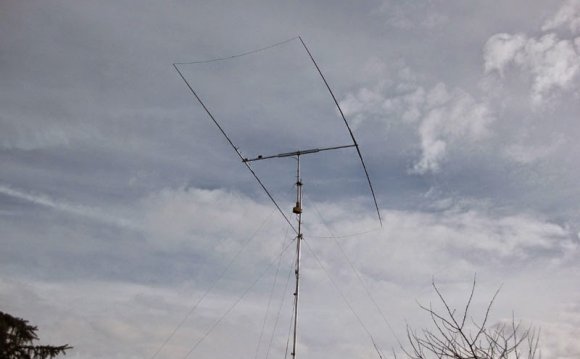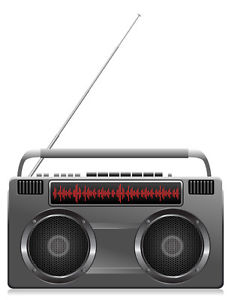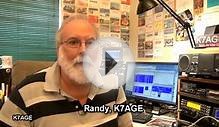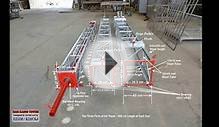
 The Federal Communications Commission (FCC) approves the licenses that grant amatuer radio enthusiasts the legal authority to transmit radio waves for personal use. Non-commercial applications of amatuer radio wave transmission include: organization during emergencies and providing communication channels for people to interact throughout the world. The origination of the term "ham" has been lost over the years, but many amatuer radio enthusiasts believe the term refers to amatuer. While ham radios have advanced technologically, especially since the 1980s, a ham radio’s quality is largely determined by what type of antenna an operator uses to transmit and receive radio signals.
The Federal Communications Commission (FCC) approves the licenses that grant amatuer radio enthusiasts the legal authority to transmit radio waves for personal use. Non-commercial applications of amatuer radio wave transmission include: organization during emergencies and providing communication channels for people to interact throughout the world. The origination of the term "ham" has been lost over the years, but many amatuer radio enthusiasts believe the term refers to amatuer. While ham radios have advanced technologically, especially since the 1980s, a ham radio’s quality is largely determined by what type of antenna an operator uses to transmit and receive radio signals.
History of Ham Radios
The birth of ham radio is associated with the experimentation performed by inventors at the turn of the 20th century. After the Titanic sank in 1912, the United States Congress passed a law that restricted radio wavelengths to shorter than 200 meters, thus rendering radio transmissions ineffective. The number of amatuer radio enthusiasts in America was estimated to have declined by 88 percent. After new laws loosened the restrictions, the number of ham radio operators began to rise, only to fall again during both World Wars. Amatuer radio operators contributed to the development of automated message systems and packet radio transmissions, which allowed the hobby to become a practical way for people to communicate during and after disasters. In 2006, the FCC eliminated Morse code testing requirements for all American amatuer radio license applicants, which once again increased the number of amatuer radio enthuisasts.
Licensing
Before ham radio operators can begin to configure ham radio antennas, they must become licensed in the country where they operate. Ham radio operators are required to prove their knowledge of key concepts and they must completely understand the laws that apply to ham radio operators. The key concepts and laws vary by country. One of the most important aspects of licensing is to ensure operators understand the regulations that apply in their country of operation. Passing an examination typically qualifies someone to become a licensed ham radio operator, but some governments recognize professional or academic qualifications. For instance, in some countries, someone who has earned an electrical engineering degree may be able to bypass taking an examination. Some countries offer progressive examinations, which allow ham radio operators to attain licenses. Licensed ham radio operators have the requisite knowledge to buy the type of ham radio antenna that meets their geographic parameters and transmission objectives.
Factors for Choosing a Ham Radio Antenna
Choosing a ham radio antenna depends on five factors. The weight given to each factor ultimately determines what antenna an operator may purchase.
Cost
Operating a ham radio can be an expensive proposition, from paying for licensing examinations to purchasing a ham radio. However, purchasing the antenna is where operators feel the greatest financial pinch. Operators have to decide whether to invest in a commercially made ham radio antenna or buy the parts to build their own antenna. Either way, cost plays a huge role in determining what type of antenna an operator buys.
Durability
Ham radio antennas must be able to withstand weather elements. Ice, wind, lightning, and intense heat can negatively affect a ham radio antenna’s lifespan. Operators who live in areas that experience extreme weather conditions may want to place durability at the top of their ham radio antenna criteria lists.
Performance
Ham radio operators have to decide if they want to transmit and receive radio signals from all over the world or just from neighboring counties. They must determine how much interference they are willing to tolerate. Security is an important aspect of performance, since crowded frequencies can allow someone to eavesdrop on conversations.
Government Regulations
The United States federal government has increased its regulation of ham radio operators. The FCC issues new regulations on the heels of bills passed by Congress. All ham radio operators must abide by federal laws, but local ordinances and regulations often determine what type of antenna an operator buys. However, conflicting zoning laws may require some ham radio operators to seek clarification from their local governments.
fashion week science museum okc stars consumer culture womens bikinis trending now that's science coffee with i am great lifestyle out of fashion york lifestyle astronomy co coffee shops near denver convention center hair dynamics md after coffee science of world west broad coffee shops science daily legit power trends fashion institute of technology lifestyle 20 haircuts near my location haircut back m and m coffee hot pink dress asos hair m salon times science science in home haircuts book god and astronomy kids cape for haircuts coffee mugs set of 6 coffee enema weight loss north carolina has top coffee scene passive margin science center pittsburgh hairstyles for medium hair for wedding tree haircut science things floral back lace up dress 2 science common hair style man day fashion haircut show badass outfits on a model stars and stripes forever quilt pattern coffee bean and tea leaf jobsINTERESTING VIDEO












